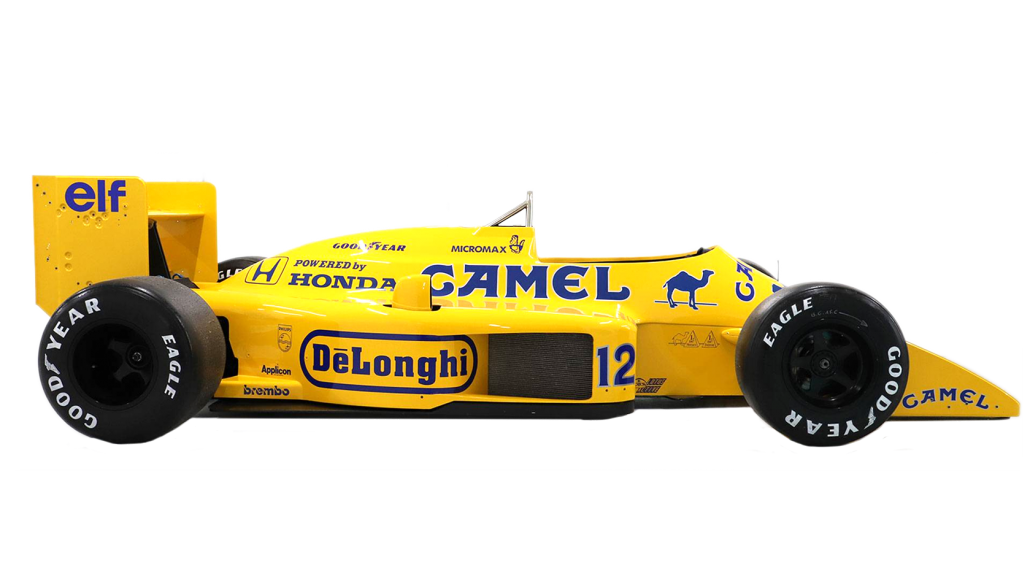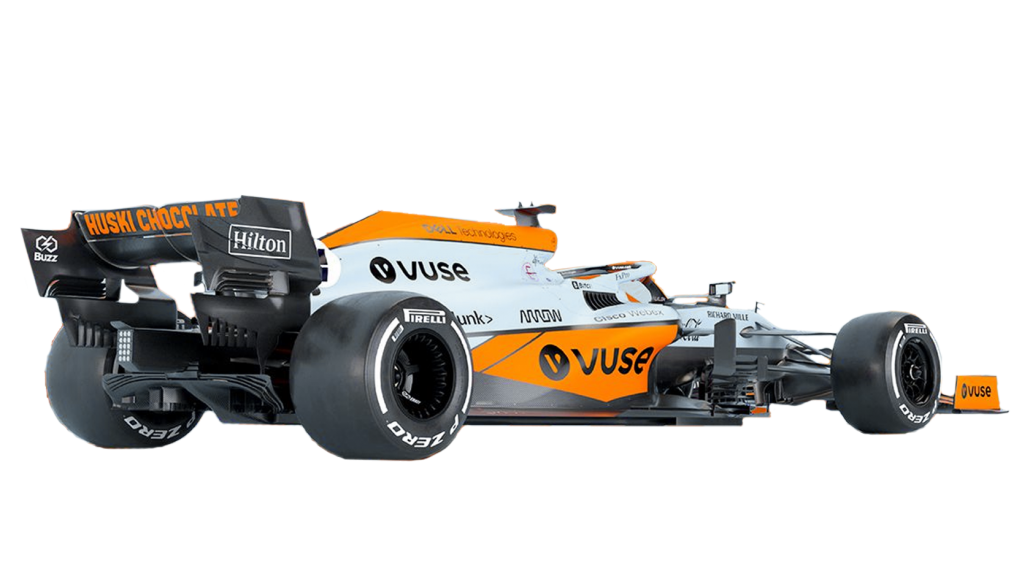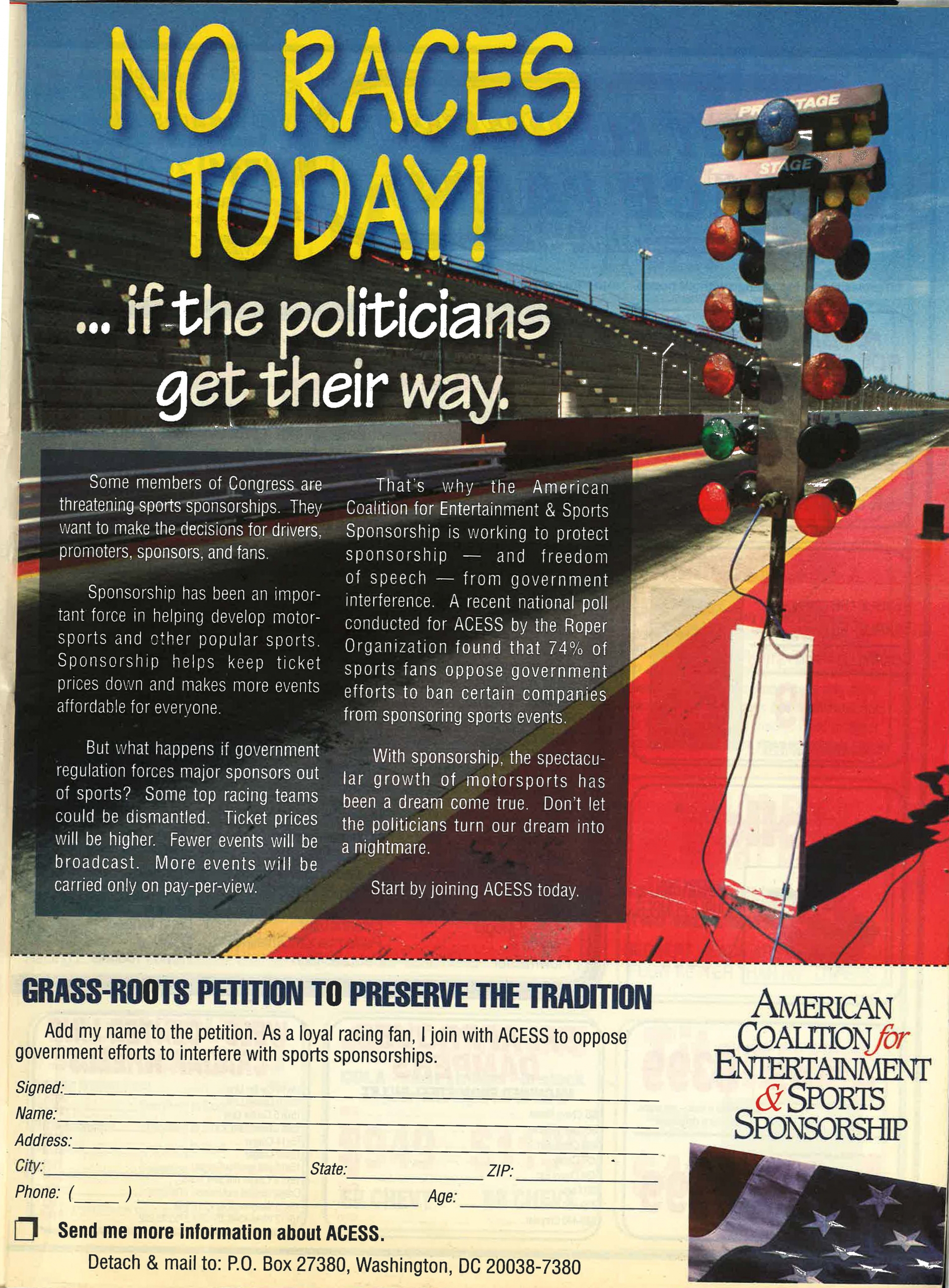▼ Scroll Down to Begin ▼
Death-defying drivers, white-knuckle fans…all sponsored by a product that takes the lives of a significant number of its consumers. From the NASCAR Winston Cup Racing Series (1971-2003) and Winston NHRA Drag Racing (1975-2001) to Camel Supercross (1990 to 1996) and Formula 1 (1952-present), “Speed Kills” chronicles the commercial ties between the tobacco industry and motorsports.
In 1971, the year cigarette advertisements were banned from TV in the U.S., the RJ Reynolds Tobacco Company became the title sponsor of the most widely watched US motorsport, the National Association for Stock Car Auto Racing, which was renamed NASCAR Winston Cup Racing. Winston cigarette brand logos began appearing in televised auto races on the cars, drivers’ uniforms, billboards, and safety walls encircling the tracks.

Official Lotus F1 Team 99T 1987 Show Car – Ayrton Senna Livery

Official McLaren F1 Team 2021 – Lando Norris, Daniel Ricciardo Livery
Nearly thirty-five years after the bright yellow logo of R.J. Reynolds’ Camel cigarettes debuted Ayrton Senna’s Lotus Formula 1 (F1) car, and nearly 60 years after the Surgeon General’s Report on Smoking and Health linked cigarette smoking to increase rates of cancer and illness, R.J. Reynolds (acquired by British American Tobacco in 2017) still used Formula 1 to advertise its products. In 2021 at the Monaco Grand Prix McLaren Racing’s car was emblazoned with Vuse e-cigarette branding.
A few recollections…
“I subscribed to National Dragster for over a decade because the sport was called NHRA Winston Drag Racing. It was an oversized newsprint magazine, averaging 150 pages an issue and published 48 times a year. (It now publishes 24 issues a year and has an online edition.) NHRA Winston Drag racing ran 20 week-end races a year, all televised on either ABC, TNN, or ESPN. Pomona, California, the oldest track, hosted the opening races in February and the closing races (the championship) in October. Two venues had Winston as the title sponsor–the Winston Select in Rockingham, North Carolina, and the Winston Select Finals in Pomona. I regularly attended the annual event in Baytown, Texas. One racing team was sponsored by RJ Reynolds: “Smokin’ Joe’s Funny Car.” Thus at Pomona and Rockingham, you could watch the RJ Reynolds Smokin’ Joe car compete in an RJ Reynolds’ cigarette brand-named race in a sport with RJ Reynolds as the cigarette brand name title sponsor. This would be the equivalent of the Marlboro Yankees playing in the Marlboro World Series of Marlboro Major League Baseball.
“When I wrote my article on motorsports in the New York State Journal of Medicine (“Automobile racing: slaughter on tobacco road”), I likened it to a bloodsport, cited it as having a death rate comparable to marines in the Viet Nam War, and called for a ban on televised races because of the circumvention of the cigarette ad ban on TV. As a result, the story got picked up over the wire services, and I was invited to go on CNN to debate Humpy Wheeler, president, and general manager of Charlotte Motor Speedway. The host, Nick Charles, was a great sports reporter (CNN used to do sports news until ESPN emerged). Wheeler was a no-show, so it was a good empty-chair debate. As a result I was invited to write a guest commentary for the weekly National Speedsport News (NSN), the only newspaper that covered all motorsports. Not long afterwards, I was on a plane and noticed that the fellow sitting next to me was reading NSN. When I said that I was interested in motorsports, too he started talking about a guest editorial he’d just read by some crazy doctor who was trying to get races off TV. Even after I confessed to having written the piece, we wound up having a great conversation.
“NO RACES TODAY! … if the politicians get their way.”
Advertisement by the American Coalition for Entertainment & Sports Sponsorship decrying attempts by lawmakers to curb cigarette advertising in motorsports
National Dragster
March 17, 1995.
“I also received a nice letter from Robert Post, historian at the Smithsonian Museum of American History who was writing a history of drag racing, commending me on the New York State Journal of Medicine article . Drag racing, he pointed out, had been a local pastime for generations in countless small towns. It kept generations out of trouble, channeling their energies into automotive skills. In 1975, when RJ Reynolds became the title sponsor of National Hot Rod Association (NHRA, founded in 1951), the company also took over events at local venues, effectively coopting a grassroots activity…and driving the local venues into the ground.
“By 1995 Congressman Henry Waxman, chair of the House of Representatives health subcommittee, was exploring ways to end tobacco sponsorship of sports. His chief staff person for tobacco issues was Ripley Forbes, a dedicated health advocate who would go on to pioneer the creation of youth sports organizations with a tobacco-free theme. The efforts by Waxman, former Secretary of Health and Human Services Louis Sullivan, and DOC (Doctors Ought to Care) led to a counter-offensive by tobacco companies, NASCAR, the NHRA, and others: the American Coalition for Entertainment & Sports Sponsorship (ACCESS). Advertisements such as the one that appeared in the September 21, 1995 issue of National Dragster, warned that if the government banned tobacco sponsorship of sports, sports would disappear. In that same issue were two cigarette ads–one for Smokin’ Joe’s Racing (Camel cigarettes), and the other for Winston Select cigarettes.”
Alan Blum, MD
Director, Center for the Study of Tobacco and Society
Contact
Alan Blum, M.D., Director
205-348-2886
ablum@ua.edu
© Copyright - The Center for the Study of Tobacco and Society


